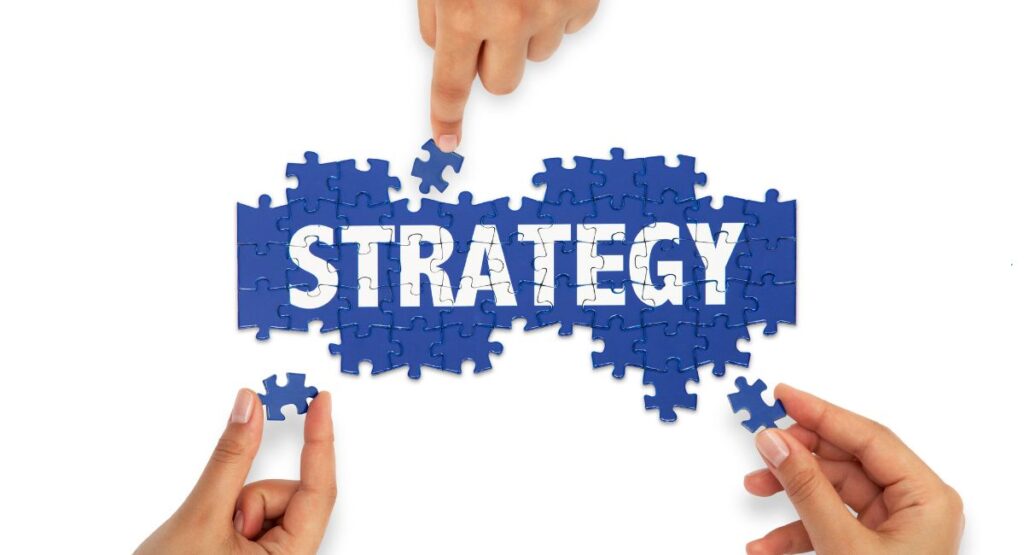The dynamics of the workforce in 2025 are quite different and call for companies to fine-tune their talent acquisition strategies. In this case, employers will seek the right talent, making terms like staffing and recruiting pretty common. However, although these two terms sound similar, they serve very different functions and are carried out in a completely different way. Understanding what is the difference between staffing and recruiting is crucial for businesses to adapt effectively to modern workforce demands.
The complexity of staffing and recruiting will be understood and talked about, followed by the relevance in modern working as well as business advantages by making proper utilization.
What is staffing?
Staffing aims at filling available jobs as fast as possible in support of immediate or near-short-term work requirements. These include recruitment for timely or seasonal and contract-specific employment position requirements. Business firms, especially under fluctuations in demand and undergoing transition operations, highly depend on this.
Key Traits of Staffing
- Flexibility: Staffing gives the organization flexibility either to increase or decrease the number of workers depending on its operational requirements.
- Speed : With a pool of pre-screened candidates, staffing agencies could fill positions rapidly.
- Economical: It saves companies the long-term benefits of employees, training, and administrative overheads.
- Flexibility: All kinds of jobs-from entry levels to specialized projects-are accommodated by staffing.
When to Use Staffing

- A shop, which requires more employees during the holiday seasons.
- A production unit requiring supplementary manpower for a one-time peak in production.
- The short-term IT experts recruited by the technology firm update the system.
Staffing is an oxygen supply to businesses that seek agility in the workforce’s management.
What is Recruiting?
Recruiting, on the other hand, is a process of sourcing and hiring the right talent for permanent roles. It deals with building a strong pipeline of candidates who reflect the company’s culture and contribute to its growth.
Major Attractions of Recruitment
- Quality over Quantity: Recruitment would seek the best fit for the position rather than the mere filling of slots.
- Employer Branding: Good hiring practices make the organization an attractive place to work.
- Skill-specific targeting : represents that process of tailoring recruitment efforts to attract those skills and experience needed for success.
- Relationship-Driven: Building and maintaining relationships with potential candidates is central to the recruiting process.
When to Apply Recruiting

- Employs a marketing manager to manage brand strategy.
- A data scientist hired to lead analytics and business insight.
- Hiring a top executive to guide the organization’s vision and mission.
Recruitment is the bedrock of firms that want to invest in their future by acquiring and developing top talent.
Staffing vs. Recruiting: What is the difference between staffing and recruiting

While staffing and recruiting work on hiring of talent, the approach adopted and the outcome are worlds apart.
| Aspect | Staffing | Recruiting |
| Purpose | Short-term workforce needs | Long-term talent acquisition |
| Timeframe | Immediate | Longer duration |
| Candidate Type | Temporary, contract, or seasonal workers | Permanent employees |
| Process Complexity | Simplified for quick results | Comprehensive and strategic |
| Costs | Lower upfront cost | Higher cost, but greater ROI |
| Outcome | Flexibility and operational continuity | Organizational growth and stability |
These differences make that much more important to know when to use staffing versus recruiting in order to optimize effectiveness.
What are the various Staffing and Recruiting Strategies?

The best results in business hiring processes can be realized by using the correct techniques in staffing and recruiting for businesses. Here’s how.
Types of Staffing Methods

1. General Staffing or Contract Staffing
General staffing is designed to meet temporary needs, thus ensuring rapid deployment of the staff for projects or seasonal activities.
2. staff Augmentation
This method, again, adds experienced professionals into established teams for specific assignments, such as IT development or engineering projects.
3.Virtual Staffing
Virtual staffing connects businesses with professionals in this new era of remote work from anywhere in the world, which helps them save on overheads from offices.
4.Specialty Staffing
Specialty staffing brings forth employees with a stronger concentration in niche industries such as healthcare, IT, or finance.
5. Patient Support Program
A specifically oriented model under the health care staff category undergirding the health staffing program toward prepared personnel for patient care.
Types of Recruitment Methods

1. Executive Search
Executive search refers to the search for high-caliber professionals for key leadership roles, such as CEOs or directors.
2. Contingent Search
A pay-for-performance model where the recruiter will receive remuneration only after successful hiring by giving leeway to the employer.
3. Enterprise RPO (Recruitment Process Outsourcing)
For high-volume hire organizations, it is suggested to select a full process source, incorporating the whole sourcing to onboarding.
4. Subscription RPO
The flexible RPO model is available on subscription basis and is suitable for customers that have variable hiring volumes.
These methods enable companies to align hiring strategies with business goals and workforce needs.
The Importance of Staffing and Recruiting in 2025
The global talent landscape for 2025 is marked by increased competition, technological change, and shifting employee expectations. If a company cannot differentiate between staffing and recruiting, it will likely struggle to maintain talent levels.
Why Staffing Matters
• High Agility: Certain industries, including e-commerce, logistics, and hospitality, experience spurts of rapid demand. The high agility in staffing is possible based on pressure due to demand.
• Cost control: Temporary workers include controlled costs and high productivity are not sacrificed.
Why Recruiting Matters
• Strategic Growth: Employment supplies an organization with a pool of people who share its visions, culture, and vision.
• Talent Retention: A tight recruitment process ensures the right fit, reducing turnover and fostering loyalty.
Those businesses that finally get the appropriate balance of staffing and recruiting will be best prepared to address workforce issues.
How Technology Is Changing Staffing and Recruiting

It has transformed itself with the advent of AI and automation in the year 2025.
AI-powered tools: Automate resume screening, candidate matching, and interview scheduling to speed up the hiring process.
- Analytics Data : Data-driven insights are followed to observe trends, predict hiring, and evaluate candidate success rates.
- Virtual Reality (VR): Enhance the candidate experience by VR-driven job simulations and onboarding.
- Social Media Recruitment refers to the use of several social media channels, including LinkedIn, Instagram, among others.
- Such technologies enable organizations to systematize their hiring process and attracting the top performers.
How Clavius Solutions Can Help Employers
We understand the specific issues that the talent-driven economy throws today at Clavius Solutions. Whatever your requirements, whether short-term staffing solutions or a long-term recruitment strategy, we can assist you.
Why Select Clavius Solutions?
1. Tailored Workforce Strategies: Solutions to meet specific business needs.
2. Industry Experience: Organizational knowledge in IT, healthcare, and manufacturing.
3. Tech-enabled approach: AI and analytics will reduce hiring friction.
4. End-to-End Support: We handle everything, from candidate sourcing to onboarding.
Clavius Solutions Solution for actionable insights, expert advice, and innovative solutions to change talent acquisition strategies in 2025.
Final Thoughts
Staffing has never been this far from recruiting. Companies that understand the difference and apply them when due will have significant competitive advantages in the talent market by 2025.
Are you ready to redefine your hiring strategies? Let Clavius Solutions guide you through all the steps in the hiring process.
FAQs on staffing and recruiting
Q. 1. What is recruiting and staffing?
Recruiting and staffing is identifying, attracting, and hiring qualified people to fill any organization’s job vacancies. Although recruiting gives an organization a pool of candidates, staffing is the correct placement and management of employees. Manpower consultancy often specializes in both recruiting and staffing for efficient work force management.
Q 2. What is the difference between a recruitment agency and a personnel supply agency?
A recruiting firm primarily focuses on acquiring permanent talent, which often is executives or specialties. A staffing agency typically supplies temporary or contract workers to fill short-term business needs. The best human resource consultancies combine these recruitment and staffing features for total workforce solutions.
Q 3. What is the staffing and recruiting industry?
This sector, the staffing and recruiting industry helps business sources talent and manages it effectively. It constitutes manpower consultancies and the HR firms specializing in candidate sourcing, screening, onboarding, and workforce planning services. It fills the gap between the seeker of job and the provider of the same.
Q 4. Is recruiting talent and staffing the same?
While talent acquisition and staffing may share some characteristics of the recruitment process, the two differ in focus. The long-term focus of building a pipeline of qualified candidates applies to talent acquisition, but staffing tends to be geared more toward short-term needs for specific projects or positions.
Q 5.What is another name for talent acquisition?
Also sometimes called recruitment or headhunting, talent acquisition is merely finding and hiring the best possible talents through an active approach. Sometimes, recruitment staffing overlaps the term because it emphasizes sourcing the best candidates.
Q 6. How do recruiting and staffing goals differ?
While hiring mainly looks into recruiting talent towards open job positions focusing mainly on placement for some length of time, in-house or permanent positions to fit certain gaps, such a staff requires being met effectively; best consultancy firms hence seek to ensure these strategic targets converge well to fill customer’s needs



